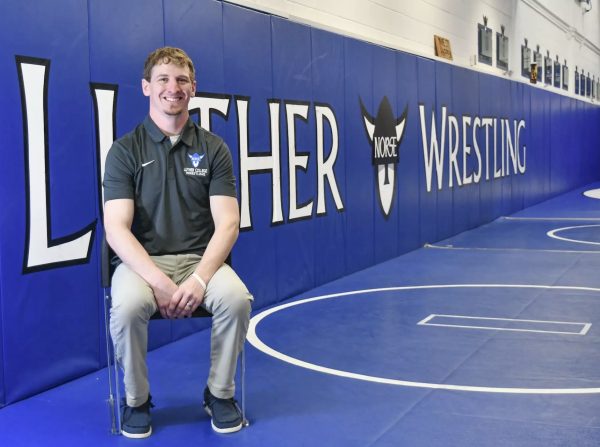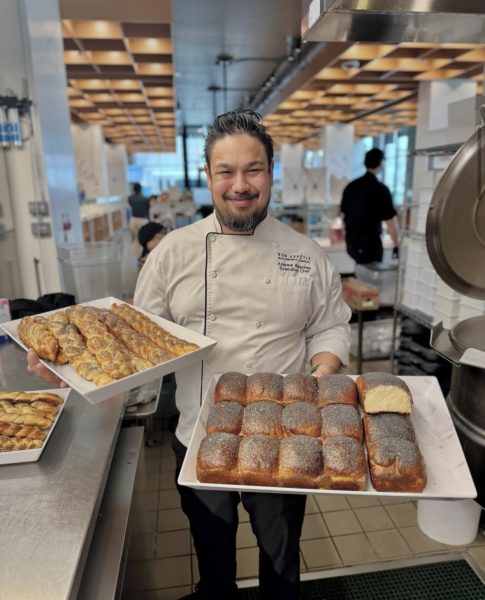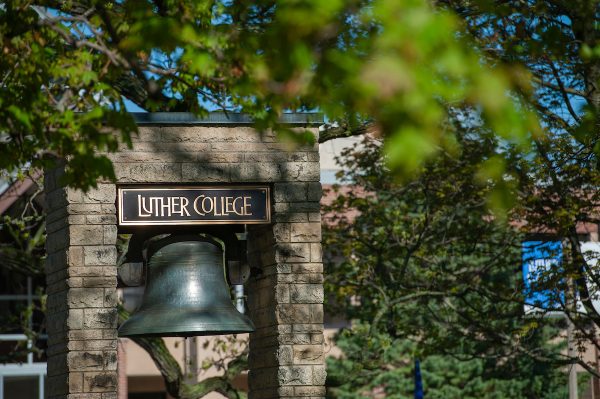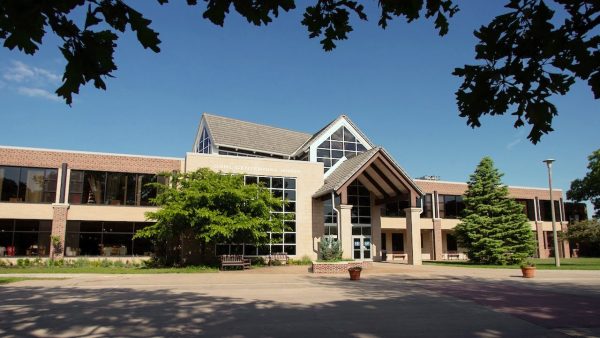Luther Allows In-Person Audiences at Ensemble Concerts
On March 19, the music department’s COVID-19 response team announced they would begin to allow in-person audiences to attend ensemble concerts starting March 21. While COVID-19 guidelines are still in place to prevent any potential spread of the virus, the college sees in-person audiences as an important step toward post-pandemic normalcy.
Since the beginning of the COVID-19 pandemic, Luther College has focused on the prioritization of the safety of students and addressing their needs. The college has been monitoring COVID-19 cases on campus, conducting contact tracing, as well as tracking local and national COVID-19 indicators to ensure a safe community. As more students are receiving the COVID-19 vaccine in conjunction with other continued safety precautions, the college administration has responded by slowly lifting restrictions, including restrictions on in-person audiences for ensemble performances.
Professor of Library and Adjunct Faculty in Music Andrea Beckendorf is a member of the music department’s COVID-19 task force, which aims to give music students the best experience possible, both in terms of normalcy and safety. Beckendorf believes the change in safety guidelines for performances is a step towards progress in returning to pre-COVID guidelines.
“Being able to add live audiences back into the spring ensemble concerts is a way to capture the joy of playing for other people, and doing that safely was a priority,” Beckendorf said. “We outlined some parameters for the CRT to consider that were rooted in our departmental protocols adopted last summer, the best in current COVID-19/Music research. We have learned [a lot] from a variety of experiences in the past year.”
The music department proposed the reinstating of live audiences to the Covid Response Team (CRT). While the proposal is pushing for in-person participation, it still acknowledges the parameters and protocols stipulated by the CRT last summer. However, with the low levels of on-campus COVID-19 cases and limited spread of the virus, the music department’s COVID-19 task force saw an opportunity to update their protocols.
Although this decision lifts some of the COVID-19 protocol, other guidelines remain in place to ensure everyone’s safety. Live audiences in the Center for Faith and Life are capped at 170 people, all tickets must be secured in advance, and seating is limited to the center sections of the orchestra level and the mezzanine level of the CFL. Musicians are spread out to align with the COVID-19 protocols set for ensembles and limited to shorter programs to limit the spread of the virus in vocal and wind ensembles.
Assistant Professor of Music Mark Potvin, also a member of the music department’s COVID task force, is looking forward to more normalcy in the music department.
“There are so many [challenges we have to face],” Potvin said. “We have shortened rehearsals and account for room air exchanges between events. Our players and singers are spaced out at three or four times the distance they’d usually be from one another. This makes it hard to perform with a sense of ensemble because, acoustically, we often hear ourselves more prominently and struggle to hear others when spaced out.”
In-person audiences change the performance experience, according to student musicians. Concert Band was the first ensemble to host a live audience. Sam Maston (’24), a clarinetist in Concert Band, notes that the in-person concert experience is vastly different from the virtual format.
“With just the live-stream, it almost feels like a dress rehearsal,” Maston said.
To limit playing time as a part of COVID-19 protocol, part of the concert was pre-recorded. Although all the musicians were seated and performance-ready, they joined the audience in watching the recording of their first piece before playing the second half of their program live for their audience. Concert Band member Jack Kates (’24) appreciated the in-person audience.
“Playing for an in-person audience feels like music is more of a conversation,” Kates said. “It was really fun because when an audience was there, it felt like the world started to get back to normal.”
For many students, COVID-19 restrictions on rehearsals and performances have been frustrating. However, with the student body keeping their numbers down, Luther has begun to give more leeway when it comes to in-person activities.
“We are grateful for the work that everyone has done in order to make it possible for our plans to be successful,” Beckendorf said. “Even though we have all given up things this year in order to have a shared music experience, we have learned new things that we can carry forward in order to shape what the new normal will look like. We have been especially impressed with how students have demonstrated their commitment to making music together, and we are glad that recognition of doing that safely now allows ensembles to share their programs with live audiences.”
With the addition of a limited in-person audience, the music department hopes to continue progressing toward normal performances and rehearsals.





